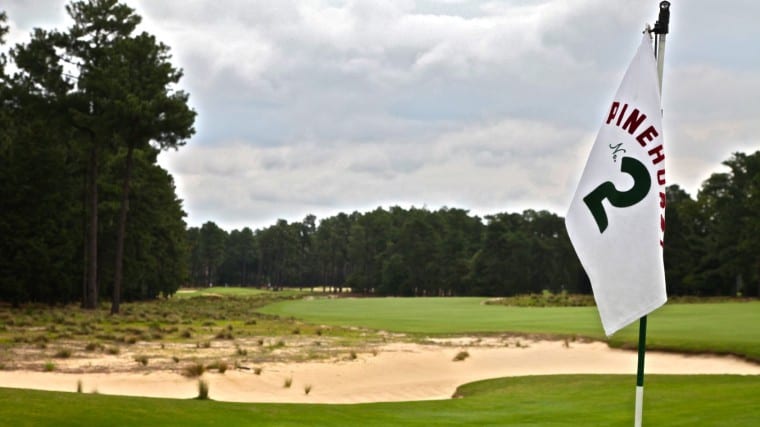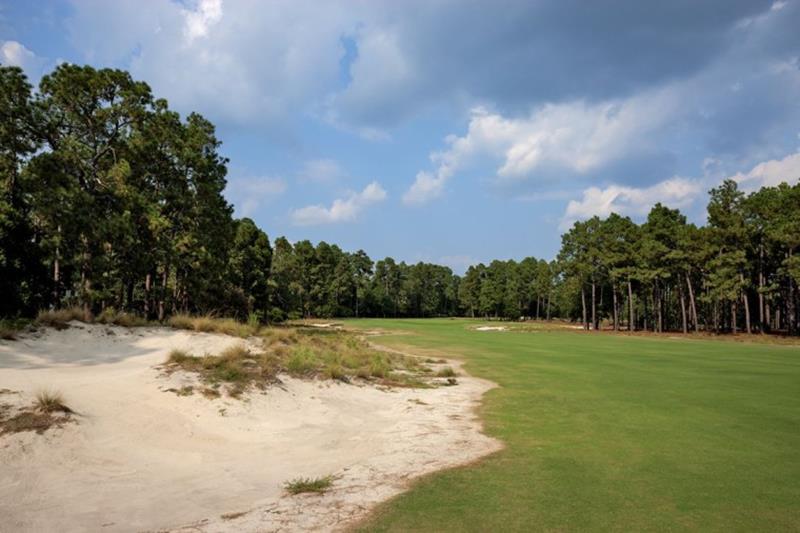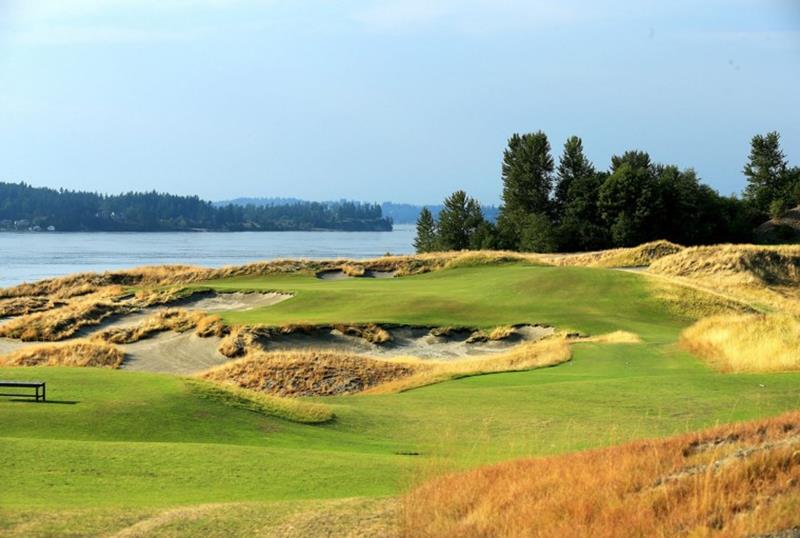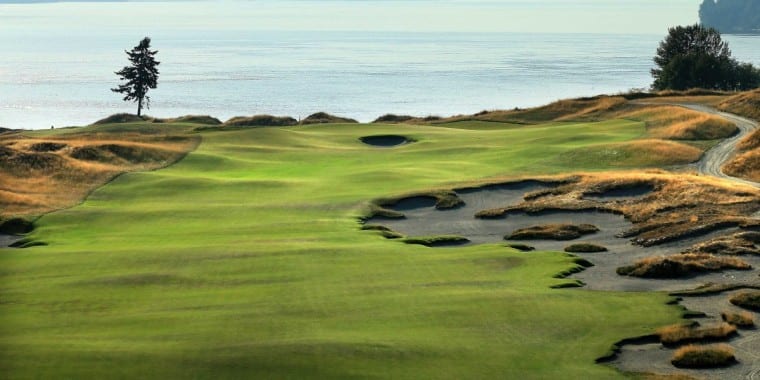Last time, my guest writer Rich O’Brien (from Charleston Golf News) wrote about the importance of women‘s participation in golf. Today, he will discuss the question of the sustainability of the game.
I recently interviewed Rand Jerris, Ph.D. the Senior Managing Director for Public Services for the United States Golf Association. He oversees many of the key functions of the USGA including facilities management, Green Section, philanthropy and grants, strategic and operational planning, and the USGA Museum. I was very impressed with the depth and breadth of his knowledge about a variety of golf topics.
Sustainability challenges in the coming years
One of the topics of our discussion was about the sustainability of game. In a recent presentation, Jerris used the United Nations Brundtland Commission’s (1987) definition of sustainable development as “meeting the needs of the present (generation) without compromising the ability of future generations to meet their own needs.”
He added that: “Golf does not exist without golfers and golf does not exist without golf courses.” In other words, to create a sustainable environment in golf, there needs to be a symbiotic relationship between the needs of the golf course and the needs and expectations of the golfers.
He continued by saying that as one of the USGA’s Health-of-the-Game initiatives: “We are trying to focus a lot of our efforts on the supply side of golf’s ecosystem. Let’s equip and manage our facilities in ways that are responsible and provide an affordable and quality experience for golfers.”
The long-term sustainability of the game presents challenges that are likely to grow into the future. Jerris adds that, “The USGA as a governing body, feels a strong responsibility to the industry helping find solutions; the best management practices, the tools, and technologies that are going to allow us to control expenses, be responsible on the consumption of our resources, and at the same time, very importantly still, provide a quality experience for golfers no matter where they play.”
With these challenges in mind, for the golf course industry to be sustainable, it will be important to reduce maintenance costs and manage water consumption. The industry has developed a number of strategies including:
- reducing the number of acres that are maintained and irrigated;
- improved efficiency of the maintenance of bunkers and rough;
- the utilization of moisture sensors;
- leveraging evapotranspiration data to manage irrigation practices; and
- embracing new types of turfgrass cultivars.
As we all know, golf is an outdoor game and there will always be some things that are simply beyond our control. Given the scale of golf courses and the amount of resources that are consumed to maintain them in peak condition, which include water, chemicals, energy or labor resources, maintenance costs are significant and will continue to rise.
In fact, the average golf course nationwide currently has an average maintenance budget of $600,000 a year. In recent years, water, nutrient, energy, chemical and labor costs have all increased. The cost of water alone has increased by 11% per year on average while in some markets, affected by severe droughts, the cost has doubled in the past 5 years.
According to Golf Course Industry Magazine, golf course maintenance costs have been escalating at a rapid pace from 2012-2015.
| Line Item | Annually | Overall |
| Water | +11.4% | Up 38% |
| Nutrients | +5% | Up 15% |
| Energy | +3.7% | Up 11.4% |
| Chemicals | +2.2% | Up 6.6% |
| Equipment | -4.9% | Down 14.9% |
In the coming years, the industry could be facing some extraordinary challenges. The drought conditions that have plagued California and the Desert Southwest have resulted in the water supply being stressed to its limits and an escalation in water expenses. In drought-affected areas such as Arizona, New Mexico and Texas, the water bills have more than doubled in the past 5 years.
Meanwhile, in some parts of California courses are spending over $2 million on water alone. Another impending problem that cannot be ignored is the deterioration of the infrastructure for the water supply in many regions and those costs will have to be passed along to users.
The U.S. Open as a Showcase
The past two U.S. Open Championships have highlighted some important issues related to the sustainability of the game. The U.S. Open at Pinehurst in 2014 showcased the restoration of Pinehurst #2 to the historic authenticity and origins that Donald Ross originally designed.
As a result of the restoration, the championship golf course looked fundamentally different than what we have become accustomed to. He added that:
“It may not have been green, but green is not a playing surface. It does not matter what color it is, what matters is how the surface plays. What players care about is if it is a quality playing surface and if the ball reacts the way it should when it hits the surface.
The men and the women who played in the championship raved about the golf course. The color is irrelevant, what matters is the quality of that playing experience.” He further added that: “It was a great sustainability story as they went to single-row irrigation and reduced the consumption of water by 65%.”
Meanwhile, this year at Chambers Bay Golf Course sustainability again played a key role in the event by highlighting how golf courses can reduce their water consumption and maintenance costs by choosing a type of grass that is native to the environment of the golf course.
In the case of Chamber’s Bay, fine fescue was chosen because the Pacific Northwest is one of 3 regions in the world where fescue thrives as an indigenous plant; the other two being Ireland and Scotland. When you have fescue grass on a golf course in the Northwest, the grass can thrive on the natural rainfall, it is less prone to disease and damage because that is its’ natural habitat and by definition a very sustainable surface.
This year’s weather in the Pacific Northwest added additional challenges as the Seattle area experienced one of the driest months of May on record, which caused the Fescue to go dormant and brown as it does when it does not have enough water.
Jerris added, however, that despite being brown, “it is very much alive. It is very much a healthy plant. And you can have some great experiences as a player on it – with the exception of some of the challenges on the putting greens which were caused by the invasive Poa Annua, not by the Fescue.
What you have there is an absolutely sustainable golf course that happened to be brown that offers a really high-quality playing experience. People confuse brown with dead, but in this case, it was a very healthy and alive turf base that is a really important responsible choice for that facility and that part of the country.”
He further added that we tend to equate quality with color, but if you look at where the game was played in Scotland for the first 500 years on fescue without irrigation systems. Under those conditions, the game thrived and was sustainable.
With the advent of modern irrigation systems and color television, viewers started to expect that their local courses would look like the courses they saw on television without understanding the labor and resources necessary to prepare a golf course to be in prime condition for that one week a year. In reality, a golf course is not sustainable over the long term for 52 weeks a year in that condition. Yet that is what players were asking our superintendents and golf course operators to provide.
Do you have something to add to this story? Share it in the comments!
httpss://www.youtube.com/watch?v=ucMT2xxF8R8





